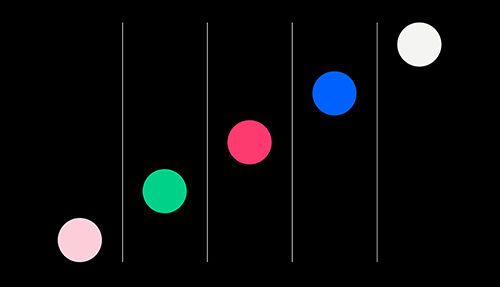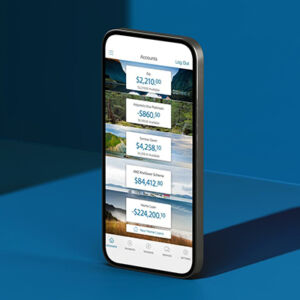How to fix common user experience issues with new SaaS products

The user experience of your software as a service (SaaS) product is crucial to its success. A bad user experience will lead to customers abandoning your product, while a great user experience can result in customers becoming advocates for your product and brand.
Why does the user experience matter?
The user experience is important because it directly impacts your users' satisfaction with your product. If your product has a poor user experience, users will quickly become frustrated and may even stop using it altogether.
A great user experience, on the other hand, will keep users happy and engaged with your product. This can lead to increased retention rates and even word-of-mouth promotion.
In short, the user experience is important because it can make or break your product. If you want your product to be successful, you need to make sure that your users have a great experience.
Your users are the lifeblood of your SaaS product, so it's important to make sure that their experience is as positive as possible. Here are some of the most common user experience issues with new SaaS products and how you can address them.
Common issues and how you can address them
1. Lack of clarity around the product's value proposition
One of the most common user experience issues with new SaaS products is a lack of clarity around the product's value proposition. Your users need to understand what your product does and how it can benefit them. If your product's value proposition is not clear, your users will quickly become frustrated and may churn. To prevent this, make sure that you clearly communicate your product's value proposition, both on your website and within the product itself.
2. Complex and confusing user interface
Another common issue is a complex and confusing user interface. Your users should be able to use your product without needing to refer to the documentation or support articles. If they can't, they'll quickly become frustrated and may churn.
An example of a great user interface that is recognised around the world is the Apple iPhone. The interface is simple and easy to use, yet extremely powerful. Even minor details, like the placement of the buttons, have been carefully considered to create a great user experience.
To create a similar user experience for your SaaS product, make sure that you focus on simplicity and ease of use. Every element of your user interface should be easy to understand and use.
If it's not, consider redesigning it. You may also want to provide documentation or support articles that can help users understand how to use your product.
3. Lack of customer support
Another common issue is a lack of customer support. If your users can't get help when they need it, they'll quickly become frustrated and may churn.
To prevent this, make sure that you have a robust customer support system in place. This should include a knowledge base, FAQs, email support, and live chat. Customer support involves more than just providing answers to questions; it's also about creating a positive experience for your users.
There's an entire subset of copywriters who are devoted to crafting the perfect customer support experience. If you're serious about providing great customer support, consider hiring a UX writer. These experts are equipped with the skills and knowledge needed to create a great customer support experience.
4. Bugs and glitches
Bugs and glitches are another common issue, and they can be extremely frustrating for users. If your product is buggy, it will damage your reputation, and may lead to customers churning.
To prevent this, make sure that you thoroughly test your product before launch. You should also have a system in place for tracking and addressing bugs and glitches quickly.
5. Low feature quality
The quality of your product's features is also important. If your users don't find the features useful or relevant, they'll quickly become frustrated and stop using your product. Low feature adoption rates can mark an early grave for SaaS products.
To prevent this, make sure that you carefully consider the needs of your target market when designing features. Each feature should have a specific purpose and be relevant to your audience.
You should also regularly collect feedback from your users to ensure that the features you're offering are actually being used and are valuable to them.
When should you ask your customers for feedback?
The answer to this question depends on your business model. If you're a B2B company, it's generally best to wait until a customer has been using your product for at least a few weeks. This will give them time to get familiar with your product and its features.
If you're a B2C company, however, you may want to collect feedback sooner. This is because B2C customers tend to make purchasing decisions more quickly than B2B customers.
There are a few different ways to collect customer feedback. You can use surveys, polls, interviews, or focus groups. Whichever method you choose, make sure that you're clear about what type of feedback you're looking for.
6. Assuming every user's interests are the same
This is a common mistake that many SaaS companies make. They assume that all of their users have the same interests, needs, and goals. However, this is rarely the case.
To create a great user experience, you need to segment your users and tailor the experience to their specific needs. This may require creating different versions of your product or offering different features to different users.
User segmentation can be a complex process, but it's essential if you want to create a great user experience. You can start this process by creating a user persona. These are fictional characters that represent your typical users.
Once you have created your user personas, you can start to segment your audience based on their needs. This will help you create a more personalized user experience that is tailored to their specific interests. We recommend creating at least 3-5 user segments.
7. Not having a clear onboarding process
Your product may be great, but if your users don't know how to use it, they'll quickly become frustrated. This is why it's essential to have a clear onboarding process in place.
Onboarding is the process of helping users understand and use your product. It's important to note that onboarding doesn't end after the initial sign-up; it's an ongoing process that should continue throughout the life of your product.
There are a number of different onboarding approaches that you can take, but one of the most effective is using a guided tour. This involves taking users through each step of using your product and providing information about what they need to do.
Another approach is using task-based onboarding. This involves helping users complete specific tasks, such as setting up their profile or adding friends. Neither of these approaches is better than the other; it just depends on what will work best for your product.
8. Lack of innovation
The SaaS landscape is constantly changing, and new products are being released all the time. If your product doesn't offer anything new or unique, you'll quickly find yourself swamped by your competition.
To stand out from the crowd, you need to be constantly innovating. This doesn't mean that you need to completely redesign your product every month; even small changes can make a big difference.
You should also keep an eye on your competition and see what they're doing that you could be doing better. By constantly innovating and improving your product, you'll be able to stay ahead of the curve and keep your users happy.
Trends are also important to keep track of. If you're not offering features that are in demand, you'll quickly fall behind. How do you find trends? Channels like Twitter, Reddit, and Product Hunt are all great places to start.
9. Not measuring the right metrics
If you're not measuring the right metrics, you won't be able to improve your product. It's important to track both engagement and retention metrics.
Engagement metrics will tell you how often users are using your product and how long they're spending on it. This will give you an idea of how engaged your users are with your product.
Retention metrics will tell you how many users are still using your product after a certain period of time. This is a good metric to track because it shows you how well your product is holding up over time.
There are a number of different engagement and retention metrics that you can track, but some of the most important ones include active users, daily active users, weekly active users, monthly active users, and churn rate.
How to avoid these issues - getting it right from the start
If you're planning on launching a new SaaS product, it's important to do your research first. This means understanding your target market, your competition, and what users are looking for.
You can use this knowledge to create a great user experience that will help you avoid the common mistakes that are made. Working with a user experience agency can be a great way to get started on the right foot. They can help you understand your users and create a user experience that is tailored to their needs.
Getting employees on board with the process can also be difficult, particularly if they need help understanding why it's necessary or how it will benefit them. In order for a transformation to be successful, all stakeholders need to be on board with the changes.
As digital transformation increases the use of cloud-based applications and services, it’s crucial that the security of your data and applications becomes an integral part of your organisation.
You can use digital tools to help you rebrand, such as messaging apps and social media platforms. However, it's important to understand the difference between rebranding and digital transformation so that your rebrand is successful.







